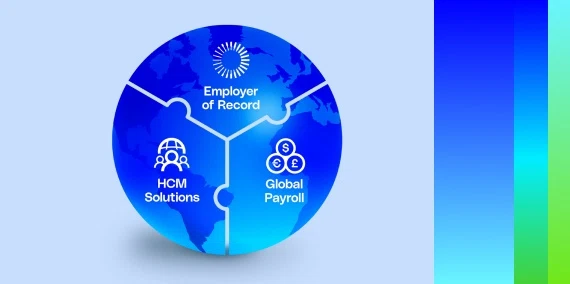Managing multiple global entities can be a challenging undertaking. “Keeping up with the regulations, reporting, and any employment-related needs are the most common challenges we see,” explained Kevin Burke, Senior Director at G-P. But there is a solution: entity rationalization.
But what is entity rationalization and how can it help reserve your resources? In this blog, we’ll examine the key steps to assessing current entities and how an Employer of Record (EOR) like G-P can help you implement a successful entity rationalization strategy.
What is entity rationalization?
Entity rationalization is a strategy that aims to help cut costs, improve products, and increase operational efficiency by reorganizing a company’s legal structure. During this process, one effective strategy is entity wind down.
For example, companies often acquire multiple entities with similar operations. Closing some of these reduces duplication and ensures the most efficient use of resources.
How can entity rationalization help reserve key resources?
Entity rationalization helps companies invest their time and energy into projects that matter. By checking how different parts of the company are performing, you can use critical resources — like time, people, and money — more effectively.
“Many companies grow inorganically through acquisitions. Companies can look at their global footprint and begin identifying what entities are critical and which ones they could wind down,” advised Burke. “One way to start is to look at how many of your entities have 30 employees or less. Oftentimes, we’ve seen it be a break-even scenario financially. However, it frees time and resources from an operational standpoint.”
Companies can look at their global footprint and begin identifying what entities are critical and which ones they could wind down.
Kevin Burke
Senior Director at G-P
Picture a company that expanded quickly into 20 countries. Each entity had to comply separately with local labor and tax laws. However, as the company’s growth stabilized, it realized this setup was costly and complex. Through entity rationalization, they identified 10 entities in smaller European markets that can be merged into a central hub. This cut down overhead costs tied to labor and tax compliance admin.
6 steps to assess your entities for rationalization
Successful entity rationalization requires solid planning and teamwork across departments. Here are six important steps to developing a strategy that will drive business goals:
- Build a collaborative cross-functional team: Gather a team from legal, finance, tax, operations, HR, and IT to assess the impact of entity rationalization.
- Perform an in-depth entity assessment: List each entity in detail, noting locations, tax status, financial performance, and compliance requirements for analysis.
- Assess the value of each entity: Look at each company’s performance and strategic importance by reviewing financial results, operational effectiveness, and alignment with the company’s core focus.
- Identify entities for merger or dissolution: Determine the best outcome for each entity based on the performance review. You might merge similar entities or wind down those that lack value.
- Evaluate employee transition requirements: Companies can partner with an EOR to retain their workforce without establishing a legal entity.
- Back your plan with expert legal and compliance support: Before finalizing a rationalization plan, your legal and tax teams should assess compliance and employment law issues. Partnering with an EOR can help navigate local labor rules and ensure smoother compliance during entity shutdowns, freeing up your teams to focus on other core operations.
How an EOR can optimize your entity rationalization plans
When exploring entity rationalization, companies should consult with a global tax advisor to assess potential risks related to winding down an entity. Once companies understand these risks, they can identify specific entities that might be suitable for an EOR arrangement.
“Start with looking at the lower headcount countries – for example, 25 to 40 employees and below,” explained Burke. While it’s common to think of merging or winding down entities through entity rationalization as losing your market presence, Burke emphasized that, with the support of an EOR like G-P, it can actually bring benefits. One such benefit is simplifying entity management by reducing operational overhead.
For example, when multi-energy company Repsol closed its Canada-based entity after the sale of its exploration and production assets in Canada, G-P helped them retain more than 50 employees. G-P managed all necessary documentation, payroll setup, and compliance requirements, ensuring a smooth and expedited onboarding process for each team member. This allowed Repsol to avoid disruptions in operations and saved them approximately USD 3.7 million in onboarding expenses alone.
Simplify entity rationalization with G-P.
If your company is ready to reduce entities through rationalization, G-P can help ensure a smooth transition. Our industry-leading global employment products and EOR solutions allow companies to quickly and compliantly hire, onboard, and manage global teams in 180+ countries, regardless of entity status.
Our SaaS-based technology is backed by more than a decade of experience and the largest team of in-country HR, legal, and compliance experts. Our proprietary knowledge base also provides key guidance and insights – everything you need to streamline each step of your global employment journey.
Are you rationalizing your entity and need support? G-P can help. Contact us today.










